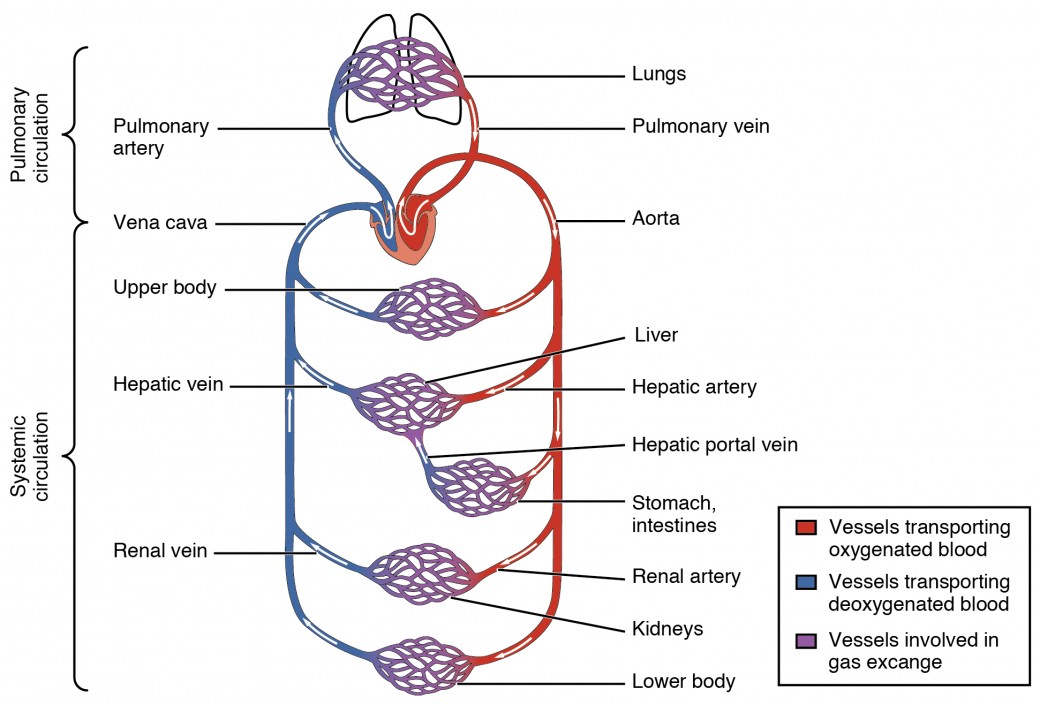Bleeding From Artery Is Characterised by Which of the Following
A rapid strong pulse may indicate shock bleeding diabetic coma or heat exhaustion. Because the blood pressure inside the arteries tends to be much higher than that in the veins a major arterial rupture can result in some fairly obvious and dramatic bleeding.
What Are The Different Types Of Bleeding In First Aid First Aid For Free
Haemobilia is defined as bleeding into the biliary tree and occurs when a fistula is formed between the splanchnic circulation and the biliary tree.

. Consider the following statements regarding blood pressure. Bleeding was clinically evaluated with signs and symptoms of vascular injury such as decreasing in systolic blood pressure to 100 mmHg or less andor tachycardia more than 100 beats per minute and with laboratory findings such as haemoglobin reduction of at least 2 gdL. Mary McMahon Date.
1 2 and 3. A jugular vein 9662 B brachial artery 6846 C femoral vein 11460 D carotid artery 10070. Arterial calcification generalised of infancy type 2.
Patients with internal hemorrhage will benefit MOST from. External bleeding would be the MOST difficult to control in a patient with a large laceration to the _____ and a blood pressure of _____ mm Hg. Bleeding from an artery which is characterized by bright red blood rich in oxygen that is rapid profuse and difficult to control venous bleeding bleeding from the vein which is characterized by dark red or maroon blood and a steady easy to control flow.
A horseshoe pad may be placed around the malleolus in combination with an elastic wrap and tape to prevent or reduce ankle edema. Ral access 2 cm with radial access or 5 cm with brachial. Examination of a patient with an ulcerative carcinoma of the posterior third of the tongue revealed bleeding from the lesion and difficulty swallowing dysphagia.
In venous bleeding blood flow comes from. GI bleeding following PA rupture is usually the result of haemobilia. Autopsy revealed that the hemorrhage was due to dissection of the celiac artery.
19 Prior studies have characterized the morbidity and mortality and risk factors associated with the need for reoperation for bleeding after CABG. The patient had an uneventful postoperative course until sudden cardiopulmonary arrest eight days after craniotomy. Arterial bleeding is when you bleed from an artery.
In our patient the hemorrhage could not be explained by a peptic ulcer. Posterior cerebral artery involvement was observed in 28 184 patients. In addition to maintaining airway breathing and circulation the MOST important aspect to consider when caring for a patient who has fainted as the result of psychogenic shock is.
With his clinical manifestation and history of gallstones hemobilia was suspected. 1479 However this information tends to be derived single tertiary center reports 13579. Most patients presented with Suzuki stage 3 or 4 MMD 617.
Reoperation for bleeding is required in 23 to 8 patients undergoing coronary artery bypass graft CABG surgery. The temporomandibular joint is characterized by all EXCEPT. Currently about two-thirds of haemobilia cases are due to iatrogenic injuries.
Superior thyroid artery All of the following may be found in the paralingual space EXCEPT. Arterial calcification generalised of infancy type 1. In these cases clots are formed causing biliary obstruction and resulting in pain and jaundice 6.
External bleeding would be the MOST difficult to control in a patient with a large laceration to the _____ and a blood pressure of _____ mm Hg. Arterial bleeding is characterized by rapid pulsing spurts sometimes several meters high and has been recorded as reaching as much as 18-feet away from the body. February 27 2022 Pain and tendernes in the abdomen are common symptoms of abdominal bleeding.
1 It is the pressure exerted by the blood on the walls of any vessel 2 It decreases in the artieries as the distance from the heart increases 3 It is lower in the capillaries than in the arteries. She died of massive intraperitoneal hemorrhage. Compression of the femoral artery could be used to control external bleeding from all of the following locations EXCEPT the.
Roperitoneal bleeding a local hematoma 10 cm with femo-. Abdominal bleeding is a serious medical condition characterized by a site of bleeding in the abdomenIt can be caused by a number of things from disease to trauma to the abdomen. Arterial arches of jejunum.
Bleeding from an artery which is characterized by bright red blood that is rapid profuse and difficult to control capillary bleeding bleeding from capillaries which is characterized by a slow oozing flow of blood. Bleeding was observed from the anterior wall of the internal carotid artery and the tear was clipped. A venous hemorrhage is characterized by a rapid flow of blood escaping in rhythmic spurts.
The second bleeding episode was characterized by a change in which hemisphere bleeding occurred in 7 patients 103 and by the type of bleeding in 23 patients 338. Access hematoma bleeding or external entry site bleeding. Your arteries bring oxygen-rich blood away from your heart and to your bodys organs.
Typical cases are often characterized by a minor hemorrhage. Right Answer is. This medical condition requires prompt intervention with.
Structure And Function Of Blood Vessels Anatomy And Physiology Ii
Comments
Post a Comment